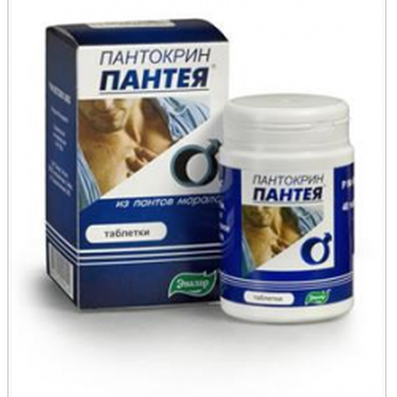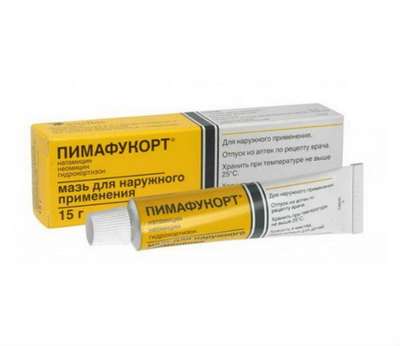Glycine and Adenosine
13 Dec 2016
Physiologist Dr. Doping tells about the opening of Glycine, adenosine receptors and the activity of motor neurons.
Glycine is one of their inhibitory neurotransmitters of the brain, though not as important as the gamma-aminobutyric acid, but still it is a substance that is able to block many information flows. At the same time is a dietary amino acid glycine, that is, a substance that is part of the normal proteins that we eat: milk proteins, cereals, meat proteins - glycine eating enough. Glycine and it has been identified as part of the protein at the beginning of the XIX century. In 1820, working with collagen, the chemists were able to identify sweetish crystals and called them glycine, and then took 30 years to identify the chemical structure has of this substance, and it turned out that the so-called amino acids. Accordingly, in the glycine molecule includes an amino group which has alkaline properties with small, and the acid group. This is a typical structure for the twenty building blocks of our protein molecule is constructed.
To improve mental, cognitive functions – Cogitum, Piracetam, Noopept, Picamilon, Phenotropil buy.
Glycine is best known as a neurotransmitter, which restricts the activity of motor neurons. As you know, each of our muscles is controlled by pulses coming from the nerve cells. Mediator of these nerve cells is acetylcholine (this is the motor neurons). Motoneurons have a system of so-called recurrent inhibition. It protects them from overstimulation. The majority of motor neurons located in the anterior horns of the spinal cord gray matter, and on their axon goes through the spine and go to the muscle. Before axons emerged from the spinal cord, it provides collateral process, and that collateral back to small cells (even they deserve their own name - Renshaw cells). It is these cells and using glycine as a neurotransmitter. The main information signal is on motoneurons and returns to the motoneuron by Renshaw cell. The trick is that the Renshaw cell is switched on when motoneuron overexcited when the signal is too intense. At the system level is too intense signal from the motor neuron means cramps, and it is completely useless. Thus, we can say that the cell Renshaw protects our propulsion systems, muscles and overvoltage from switching in a convulsive state. And this is extremely important.
If you look at the synaptic level, we see that the glycine - is a mediator, for which there is only one receptor. This is a fairly rare situation, because, as a rule, to the mediators have several types of receptors and glycine - a variant of the receptor. The receptor, which when hit glycine starts to pass through itself chlorine, and chlorine ions entering the motoneuron, retarding it. Chlorine has a negative charge, the cytoplasm of motor neuron starts to become more negative, and the intensity of the pulse generation is reduced. This recurrent inhibition is indeed very important, and if you block it, it appears a lot of problems.
As is known, there are toxins, including natural plant toxins that interfere with work glycine, i.e. glycine receptor antagonists. The most famous of these antagonists - strychnine, toxin large tropical tree that called chilibuha. Chilibuha strychnine produces in large quantities, defending, for example, by eating the seeds of different arthropods. Man, this toxin is also known, and often in detective novels villains etched other characters using strychnine. If strychnine ingested, it blocks the effects of Renshaw cells and motoneuron really goes into a convulsive superactive mode. For this enough to motor neuron action potentials occurred with a frequency of 200-300 pulses per second. Then there is a total convulsion, and she, for example, stops breathing. The body, which was hit by a large dose of strychnine, die, in fact, from suffocation. If strychnine take in microscopic doses, can be a little, gently raise the level of activity and motor neurons and other neurons that receive glycine inhibition. I must say that strychnine in microdozes really was once used as a psychomotor stimulant, and was even one of the first sports doping when the era of big sport and doping just begun. (Now they use Meldonium, Phenotropil, EPO) And at first he appeared as a drug in the horse sports, horse racing, and then uses of strychnine were registered athletes during the first Olympic Games, when there were no anti-doping control. It could be that some Olympic marathon champion took a little bit of strychnine and a little bit of cocaine, no WADA at that time did not exist.
If we use glycine as a drug, it can cause slight inhibition of the nervous system. But I must say that this requires a large enough dose, because, since glycine is a component of the normal protein, every day we get a normal diet of about 1 gram of the substance. If you want to use glycine as a drug that somehow further retarding the nervous system, it turns out that you need to have not less than 1 g administered as a tablet. Then, perhaps, there will be little relief.
The fact that not only the motor neurons are located in the spinal cord, where there is a control trunk and limb muscles. Quite a lot of motor neurons in our brain, and the brain controls mainly the muscles of the head, facial muscles, tongue, eye muscles. At a time when the glycine systematically enters the body, it also affects the motor neurons, and that is called a stem structure, because the axons Renshaw cells in the stem structures differ widely and are affected by, for example, on the vasomotor center, center associated with the development of stress. Therefore, glycine, taken as a systemic drug, can have a very soft, but very real calming effect, to protect the person from stress. To cope with stress – take Phenibut and Phenazepam.
Furthermore, glycine is useful in situations where brain somehow overexcited. This may be due to its immaturity as small children, or for example, it may be related to cerebral aging. In general, we can say that glycine belongs to the category of drugs that are not exactly hurt, and maybe even help, because it is very poorly passes the blood-brain barrier, but if passed, then may be slightly under- stop various functions of the brain, and this is the case helpful.
Adenosine is another substance that is able to provide our system, inhibitory effects, cause a slowdown of different functions. By this matter there are specific adenosine receptors and their activation causes a subjective sensation of fatigue. Accordingly, we cease to actively move. In fact, adenosine receptors have on so many bodies, and in most cases, their activation causes a reduction in the activity of these bodies. That is, in fact, it is anti-fatigue and overload.
Why adenosine is involved to such a function? In fact, all who are interested in biology, knows the word "adenosine", "adenine" because this molecule is a part of the nucleic acids - deoxyribonucleic and ribonucleic. When we look at the structure, where there are "magic letters" ATGTS or AUGTS. Here is A - adenosine, a molecule that is composed of nitrogenous base adenine, and attached to him even pentose sugar (eg, ribose). Adenine plus ribose - this is adenosine.
Besides the fact that adenine and adenosine are part of nucleic acids, there is another very famous and important molecule called ATP - adenosine triphosphate. ATP - a molecule, which holds the entire energy metabolism in our cells. As is known, this molecule to adenosine fastened three phosphoric acid, and their separation is run some reactions in the body at the molecular level, because every time flies a phosphoric acid, a "slice" of the energy transferred to the protein molecule, who are doing something. In this sense, adenosine triphosphate compared with a children's gun, which has three balls. You can shoot three times - three phosphoric acid departed. It is running a lot of work. Charging of the "pistol" is known to occur in the mitochondria due primarily glucose oxidation. And when your "pistol" is completely discharged, then suddenly it turns out that instead of ATP you already stayed clean adenosine. Once it appeared in the extracellular medium or in the cells, which means that the energy supply is about to end. The emergence of adenosine - a sign that the system is tired and need to reduce the overall activity. From this viewpoint, it is advisable the existence of adenosine receptors. The appearance of this molecule indicates that you need to reduce activity.
Indeed, we are seeing these receptors on a variety of bodies - in the walls of blood vessels, the heart of their operation is very important - and also, of course, in the nervous system. The adenosine receptors are present on a variety of neuronal cells and are capable of lowering their activity.
From the viewpoint of practical application, we did not encounter basically adenosine and with a substance called caffeine. Caffeine - a very well-known molecule. Moreover, it is the worldwide marketed psychoactive drug that is part of the huge amount of products. Caffeine is an adenosine receptor antagonist. Joining these receptors, it prevents adenosine transmit a signal of fatigue. In most cases, we can see that caffeine effect is invigorating, that is, the system continues to operate, despite the fact that it is really quite strongly tired. This is quite a dangerous effect of caffeine, because it turns out that the very substance or caffeinated beverages, strictly speaking, do not give power. Whatever broadcast advertising in the jar with some kind of liquid does not contain any energy. At that moment, when you enter into the body of caffeine, you just block the signal of fatigue, and the cells, rather than move to a more peaceful mode, continue to function actively and go into a reserve stock of ATP.
Some percentage of ATP (20%) of our cells keep on the safe side in case. Against the background of caffeine we begin to use this stock, and fatigue goes much deeper than usual. If you do it sometimes, on some special occasions, the particular harm in this. And if you do it all the time, then it can become a serious problem. In the end, may be formed to caffeine addiction, dependence on caffeine as a cup of coffee without eyes in the morning is no longer open. Of course, caffeine is not a serious drug, nicotine, heroin or cocaine, but drug similar action it still is. Therefore, we must be careful with caffeine substances and products (and they surround us on all sides). As is known, caffeine and substances related to it are contained in tea, coffee, chocolate (i.e., cocoa). All kinds of drinks, which are within the word "Coke" is also usually contain significant amounts of caffeine, which is released from the special nuts, called cola.
Another interesting effect is associated with metabolic disorders in some people. The fact that when we go from the body care nitrogen metabolism wastes formed first substance called urea, and then there is a molecule called uric acid. Uric acid in their structure resembles caffeine and can have general-stimulating effect on the body. People who have a lot in the body of uric acid, all the time are under the caffeine, and they are very active. This is the effect on the human temperament. Thus such people are at increased risk of developing gout, that is inflammation of the joints, begins when uric acid is deposited in the joint capsules, especially in areas which are often cooled, - in the fingers and toes. Gout life is pretty hard, though, as a rule, he is mentally very active.

 Cart
Cart





